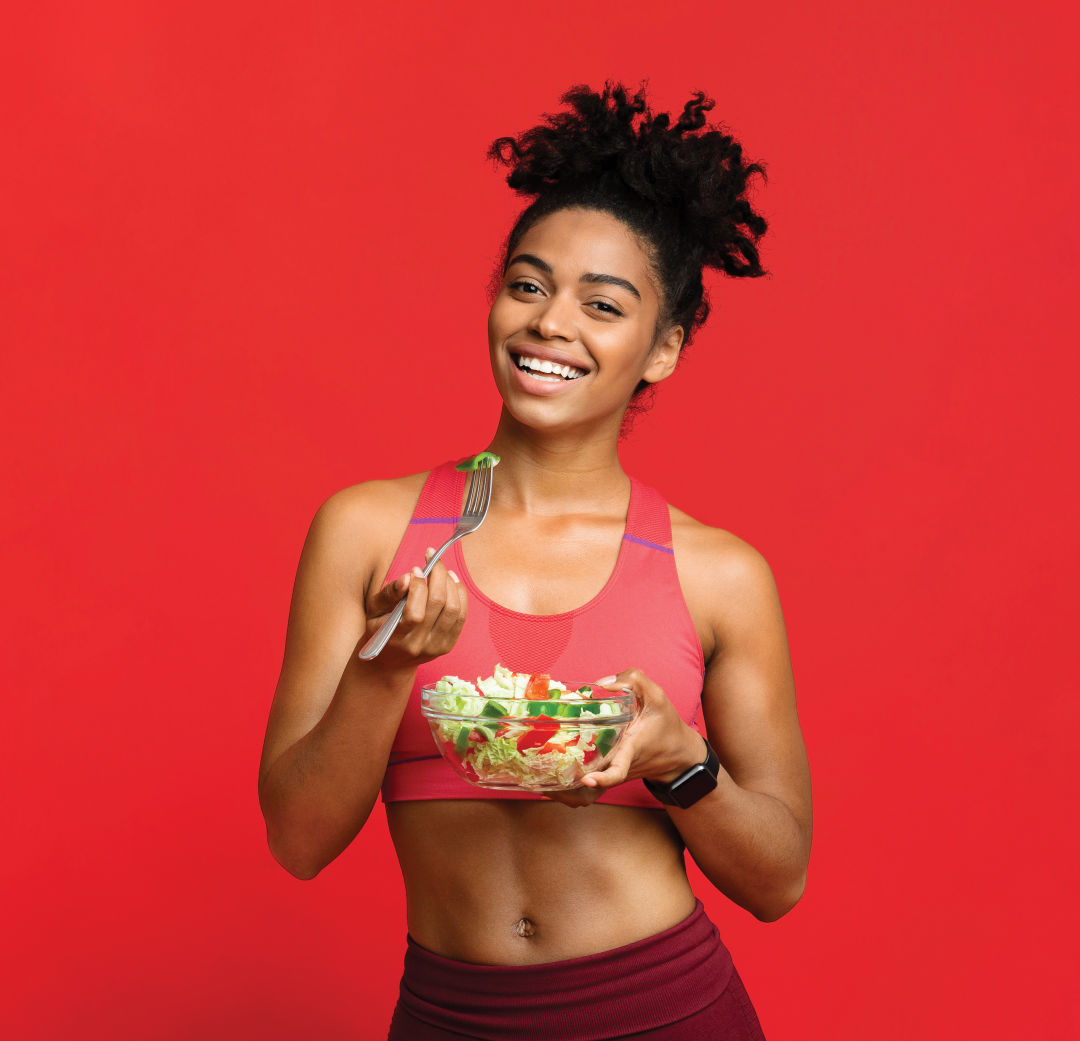
It’s no secret that professional athletes follow all sorts of diets to keep in shape. Serena Williams, still a top-ranked player at 39, once followed a raw and vegan diet. LeBron James likes organic and no sugar. Tom Brady, who won his seventh Super Bowl at 43 years old, is famous for the foods he avoids. If special diets work for them, could they help regular fitness buffs? Jackie Barcal, head nutritionist at IMG Academy in Bradenton, says the answer is nuanced.
“The biggest difference between professional athletes and the average person is the sheer amount of calories that athletes need in order to sustain themselves and recover from training,” says Barcal. “Most athletes at IMG are training morning and night, burning anywhere from 3,000 to 5,000 calories per day, which means they eat 5,000 or more depending on the time of year, level of training and whether they are injured or not.”
Diets popularized on social media and in documentaries like Cowspiracy and Forks Over Knives that recommend avoiding all dairy and meat are leading to more interest in specialized ways of eating, says Barcal. Google Trends reported a 100 percent increase in “veganism” searches in November 2020, and a 91 percent increase in “keto diet” for January 2021 in the U.S. alone. Even athletes wonder if they should try these diets.
“Veganism [no animal products] and the [high-fat, low-carb] ketogenic diet are two of the biggest diets that I receive questions about from students,” says Barcal, who also works with professional athletes. “While we don’t tell them not to try it, as it can’t really hurt, we come from the philosophy of eating everything in moderation and fueling the body with all sorts of whole foods.”
Veganism has worked for pro athletes, such as NBA star Kyrie Irving. However, Barcal recommends taking supplements like B12 and Omega 3s for fat and iron to replace the nutrients found in animal products. She warns against protein powders, bars and shakes advertised on social media, since the ingredients are not always monitored by the FDA.
“Checking the ingredients is important,” says Barcal. “Make sure these powders do not have additives, emulsifiers, chemicals for taste and preservation or GMOs, which can be chronically inflammatory to the muscles, the opposite of what muscle recovery should be after a workout.”
And for the average person, she warns against replicating an athlete’s diet. The athletes she works with refuel every two to three hours and load up on clean sources of protein and carbohydrates. The amount of calories and protein needed for someone like Brady is not necessary for someone working at a desk and exercising twice a week. A healthy amount of protein can be found in a diet with vegetables and lean sources of protein and fat.
“I could work with a 110-pound female tennis player and a 200-pound football player who require the same amount of calories because of their metabolisms,” says Barcal. “This is why people must keep in mind that we can’t completely take on the diet of a professional athlete, or anyone else, for that matter. Nutrition is highly individualized.”
A popular style of dieting for bodybuilders has been the bulking/cutting cycle, which requires them to eat a calorie surplus for months at a time, while working out for hours a day at the gym, to promote rapid muscle growth. This is followed by a period of “cutting,” or putting themselves in severe calorie deficit, for muscle definition prior to a competition. This cycle can continue for years, and there is controversy surrounding whether this diet is safe or can damage metabolism, especially for someone who is not a professional.
“The bulking/cutting cycle is similar to that of intermittent fasting, another popular diet trend that I get questions about from students,” says Barcal. “However, the 12- to 18-hour period of fasting required of this diet is not sustainable, and will not only alter metabolism performance, but mental clarity needed to perform a sport, focus at school or even focus at work at a typical job.”
This is also why Barcal finds that the ketogenic diet is not sustainable long-term. While some celebrities and athletes have found it to be helpful, its origins are rooted in healing epilepsy in young children, because the state of ketosis, or period of fat burning, helps reduce seizure activity. Keto’s mainstream popularity has more to do with our diet culture’s fear of carbs and how marketing has villainized this major macronutrient needed for life. Athletes need carbs to restore glycogen while training, and while the average person needs about half the amount of the typical athlete, they are still necessary.
So, what do professional athletes eat that “normal” people can eat, too? Meals that include whole grains, vegetables, fruit and lean protein are common. Professional and NCAA rowing teams that compete at Nathan Benderson Park order meals from Zildjian Catering, which creates special menus composed of nitrate-free grass-fed proteins and whole sources of carbohydrates, like sweet potatoes, quinoa or brown rice. The typical NCAA rower will consume 5,000 or more calories per day, and about 15-20 grams of protein per meal.
Barcal also emphasizes that professional athletes, when resting, are normal people, too. Sure, Brady excludes white sugar, flour, dairy and most fruit from his diet. But even he admitted to indulging in a drink—or two—after winning the Super Bowl this year.
“Lives have to be lived, and celebrated, and humans do that through food,” says Barcal.
"Eat" - Google News
May 24, 2021 at 10:28PM
https://ift.tt/3hMv2Ld
Should We Eat Like Pro Athletes? - Sarasota
"Eat" - Google News
https://ift.tt/35xQHgx
https://ift.tt/2zlBS68
Bagikan Berita Ini

















0 Response to "Should We Eat Like Pro Athletes? - Sarasota"
Post a Comment